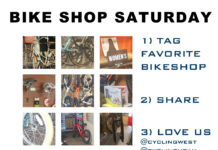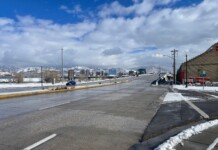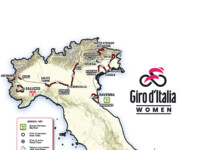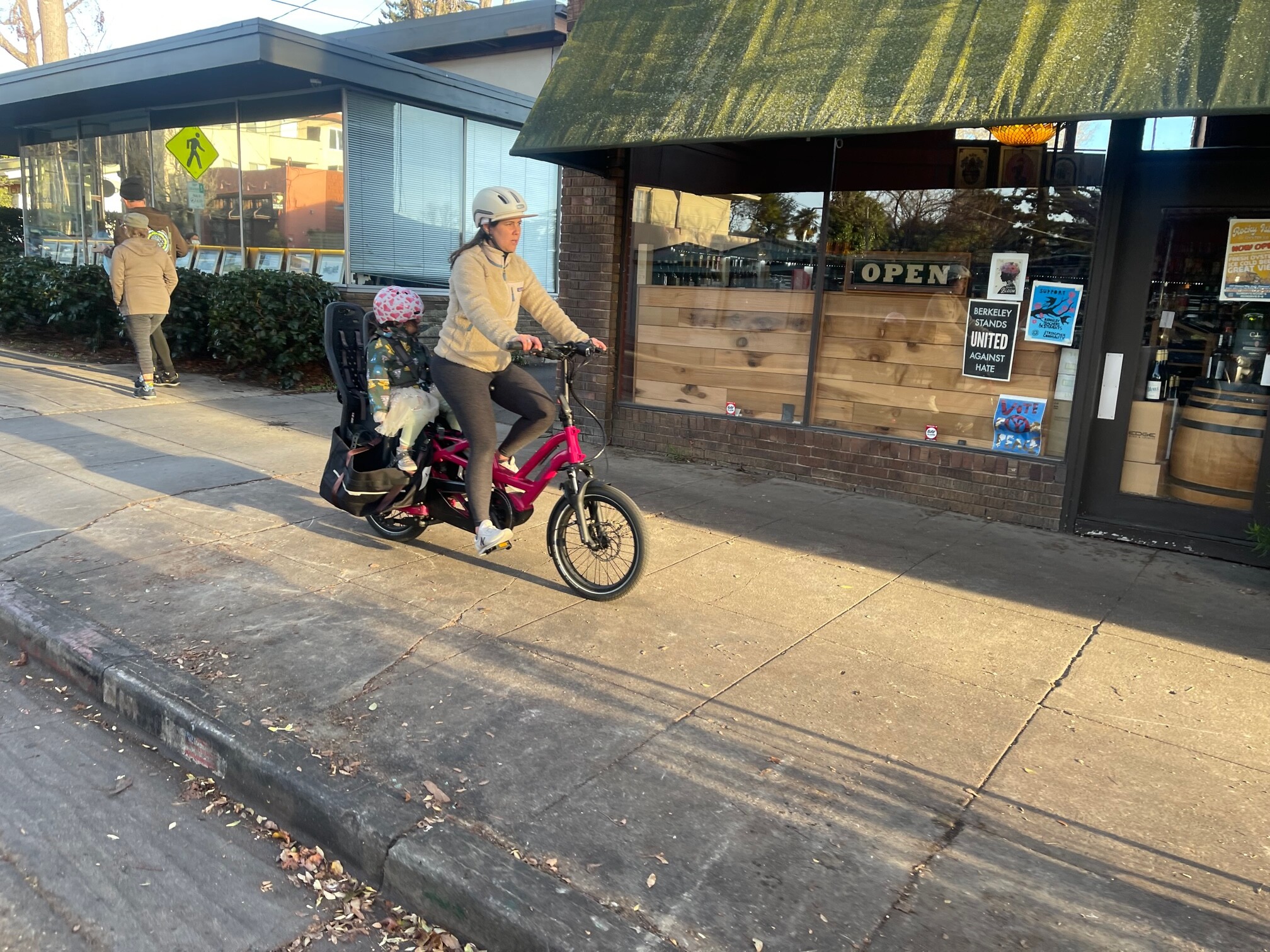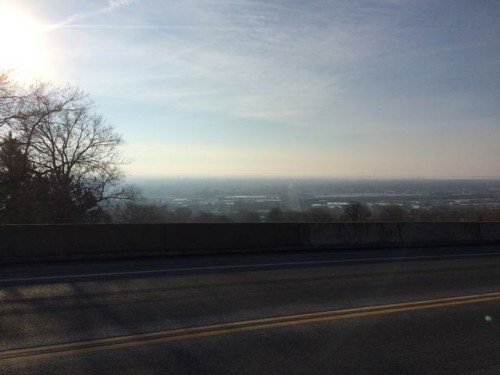
Editorial by Dave Iltis
Originally Published 1-22-2014
As cyclists, we have a lot to lose by breathing dirty air. All the heavy breathing and oxygen processing we need to do to keep going means that we filter larger amounts of toxins than sedentary people. The more toxins in the air, the harder it is to take in oxygen, and the harder we have to breathe.
Utah’s air quality is often bad, especially in winter and in the heat of the July sun. In winter, temperature inversions form in Utah’s valleys – in particular the Salt Lake Valley, Cache Valley, and Utah Valley, and in many of the west’s basins. This is natural and would occur regardless of whether or not people live in those areas. What is not natural is the pollution that our society dumps into the air shed.
In winter, PM 2.5 (2.5 micron diameter particulate matter) abounds in our air. PM 2.5 lodges in our lungs and can lead to asthma, impaired lung function, and increased risk for lung cancer. For a longer explanation of the effects of PM 2.5 and ozone, with references, see https://www.cyclingwest.com/fitness/health/air-quality-and-cycling-what-utah-riders-need-to-know/
In summer, the main toxin is ground level ozone. This is formed when sunlight interacts with nitrous oxides and VOC’s (volatile organic compounds). Ozone is very reactive, and can damage lung tissue. See the above referenced article for more detail.
As I write this (in 2014), Salt Lake County’s PM 2.5 level is 47.1 micrograms/meter^3 and Cache County’s is 45.6, which puts the air quality in the ‘Unhealthy for Sensitive Groups’. The Salt Lake-Davis-Ogden Metro area is the 6th worst city in the country for short term PM 2.5, while Logan and Provo-Orem are 10 and 11 respectively according to the American Lung Association’s State of the Air report (http://www.stateoftheair.org/2013/city-rankings/most-polluted-cities.html). This is not a ranking for Utahns to be proud of. Salt Lake County is currently an EPA non-attainment area for PM 2.5 (http://www.airquality.utah.gov/images/Maps/NONATTAINMENT_MAP.pdf and http://www.epa.gov/oaqps001/greenbk/ancl.html) .
We cycle for many different reasons. We cycle for transportation, health, well being, the environment, happiness, mastery, competition, to push our limits, to get away, to feel the wind in our face and the speed of the descent, to be one with a machine, and most of all for fun. Air pollution takes this away from us – some days just a little, some red smoggy days completely. I’m tired of this, and I bet you are too.
It’s time for us as cyclists to do something about this.
First, we can educate ourselves on the different types of pollutants and the main sources of them. See the above links for a primer, and find out more at http://airquality.utah.gov .
The main sources of air pollution in the Salt Lake Valley are industry, automobiles, and point source (everything from restaurants to aerosol cans). Major industrial contributors to our poor air quality include Rio Tinto and the various oil refineries in the northern part of Salt Lake City. Utah recently granted permits to allow Rio Tinto and the oil refineries to expand and to ultimately increase the levels of pollution in the valley.
We need to use that knowledge to demand solutions from our politicians. It is no longer acceptable to trade our lungs for economic development. It’s no longer acceptable to let some profit while others pay the price.
Second, we need to ride. We need to encourage others to ride. And we need to lobby for better riding conditions. Better riding conditions, encouragement, more bike lanes, and safer riding lead to more people riding their bikes, which leads to safer riding conditions and even more people riding their bikes.
Automobiles and other vehicles are a leading cause of air pollution. Most of us use them. Save for a few dedicated souls, most of us are not likely to give up driving completely. But as cyclists, it’s easier for us to make the commitment to leave the car parked in the driveway more often. I went to the Utah Opera the other evening with a friend, and she and I were the only ones other than a few of the musicians who rode to the venue. The theater was packed – with over 1000 people in attendance (the Capitol Theatre holds 1876 people) – yet no one else rode their bikes.
The jury is still out on whether or not riding exposes you to more pollution than riding in a car, or less. This can depend on the ventilation of the car, traffic patterns, and the route you choose if you cycle (see City Cycling by Pucher and Buehler, ch. 5 and Van Kempen et al., 2010 http://www.rivm.nl/bibliotheek/rapporten/630053001.pdf ).
Take one more trip on your bike each week. Fix up your old racing bike or mountain bike with lights and fenders and commute to work one more day each week. Ride to the Opera. Get a rack and panniers and ride to the grocery store. Get your kids to ride to school. Get your kids’ school to install adequate bike racks. Ride your bike or walk to church or the coffee shop on Sunday morning. Take transit and bring your bike along. Ride a Greenbike (http://greenbikeslc.org) . While you are riding, protect yourself by riding on less traveled roads which will lower your exposure to pollution. Consider getting a particulate mask, one that filters at least 95% of PM 2.5. NIOSH 95 masks will fit the bill in theory. 3M makes several that are available at Home Depot. Respro masks do to in theory (see http://www.myhealthbeijing.com/children/pollution-masks-which-are-best/ and http://www.myhealthbeijing.com/china-public-health/respro-vs-totobobo-which-mask-works-better-for-air-pollution/ ). For some advice from Beijing see http://www.myhealthbeijing.com/china-public-health/air-pollution-masks-a-review-of-the-best/
Additionally, take part in local bike advocacy. Please join Bike Utah, our state’s bike advocacy organization. http://bikeutah.org
Call your politicians and demand solutions. Gov. Gary Herbert’s number is 801-538-1000. Contact your state representative or senator – see http://le.utah.gov for contact information. Call them or email them and ask that they clean up our air. Many solutions are offered here: http://utah.sierraclub.org/content/utah-air-quality
In addition, Cycling Utah advocates for drastically increased funding for active transportation (biking and walking). This should be at least 2% or more of our transportation budget. Please let your representatives know.
And ride.
The more of us that ride, the cleaner our air.
2016 Legislation (Source: Heal Utah):
Let’s start with the good bills:
First is Air Quality Amendments from Rep. Ed Redd (R-Logan). This would revive the ultra-low NOx water heater rule that the Air Quality Board passed this fall, which was then squashed by a legislative committee. Rep. Redd’s bill would undo this damage and let Utahn’s reap the benefits of cleaner burning water heaters.
Then, we’ve got a trio of bills to incentivize solar. One bill would legalize a type of solar lease called a Power Purchase Agreement. This is a popular model used by companies like Vivint Solar and Solar City which could make solar more affordable to a wider range of customers.
A second bill, by Rep. Lowry Snow (R-St. George), would prevent Home Owner Associations from barring rooftop solar installation. The third bill would exempt rooftop solar owners and leasers from paying property and sales taxes on their installations, an incentive 15 other states have. If passed, this trifecta could be a major boon to solar development in the state – especially important given Rocky Mountain Power’s efforts to yank us in the other direction.
Also, HEAL supports HB121 from Fred Cox (R-West Valley City), which would upgrade the state’s building codes to a 2015 standard. This would make new homes 15-20% more efficient than our current (2006) codes. Finally!
Next, Rep. Steve Handy (R-Layton) is also running HB87, which would extend our current state tax credits for electric, hybrid and natural vehicles and sets up a fund for folks who convert their vehicles to cleaner burning technology.
Finally is “Income Tax Contribution for Clean Air” from Rep. Patrice Arent (D-Millcreek) which creates a dedicated source of air quality funding through a simple tax check off. Since we currently do NOT have any dedicated yearly funding for air quality this could lead to an important revenue source for an underfunded division.
But this session is of course not without a few bad apples. Here’s the bills that endanger our efforts to support clean air and clean energy which HEAL will be fighting:
First up, is Building Code Review and Adoption Amendments from Rep. Brad Wilson (R-Kaysville). This bill delays how often we update our building code, which includes important energy efficiency measures. This means increased energy costs and more emissions. A true lose, lose.
Next is a bill from Rocky Mountain Power. STEP, or the Sustainable Transportation and Energy Plan, is being billed by the company as big push toward a more sustainable energy policy in Utah, but don’t be fooled. Buried in the bill are regulatory changes that would ultimately net Rocky Mountain Power (and cost ratepayers) millions. Plus it would bypass the regulatory panel that sometimes keeps them in check, the Public Service Commission. And while the bill has a few clean air carrots, other pieces would harm environmental interests. You’ll hear a lot more about this as the session moves forward.
Finally, no list of bad bills would be complete without an appearance from Rep. Ken Ivory (R-West Jordan). He’s pitching the “Ratepayer Protection Act,” which would stop (or at least slow down) Utah’s implementation of the Clean Power Plan, President Obama’s program to reduce the carbon output of our electricity sector. Lovely.
Websites:
Utah Physicians for a Healthy Environment http://www.uphe.org)
HEAL Utah (http://www.healutah.org/)
Utah Moms for Clean Air (http://utahmomsforcleanair.org)
American Lung Association (http://www.lungusa.org)
Utah Chapter of the Sierra Club (http://utah.sierraclub.org)
Athletes for Clean Air (http://www.athletesforcleanair.com/)
Utah Department of Air Quality http://airquality.utah.gov
State of the Air Report http://stateoftheair.org
Breathe Utah http://www.breatheutah.org/
Bike Utah – join the state’s non-profit bike advocacy group: http://bikeutah.org
What Cyclists need to know about air quality: https://www.cyclingwest.com/?p=436
Utah Air Quality Annual Report:
http://www.airquality.utah.gov/Public-Interest/annual-report/.pdf/2012Annual%20Report.pdf
Tips for Winter Riding:
https://www.cyclingwest.com/?p=805
Stay Lit: https://www.cyclingwest.com/?p=1869
Upcoming Event (2017):
Clean Air, No Excuses Rally – 1 pm, January 21, 2015 at the Utah State Capitol. Show up to demand that the legislature and the Governor offer real solutions to cleaning our air. https://www.facebook.com/events/1828271550762511/
Sign the petition here: http://petitions.moveon.org/sign/utah-clean-air-no-excuses
Clean Air, No Excuses 2015 Rally Photo Gallery: https://www.cyclingwest.com/news/utah-clean-air-no-excuses-2015-rally-photo-gallery/
Note: This editorial was first published in 2015 and updated in 2016 and 2017.



